The first time you walk into a new gym you probably notice a collection of machines. You may never glance their way again or they may be of interest to you depending on your goal and level of experience. The leg extension gets some hate for not being “functional” — sitting down while bending and straightening your knees is not something you need to do every day.
But if you want to grow massive quads, the leg extension can function for that purpose. The ability to isolate your quads on the leg extension machine is invaluable. It can be a great addition to your program, especially along with compound movements like squats, deadlifts, and lunges.
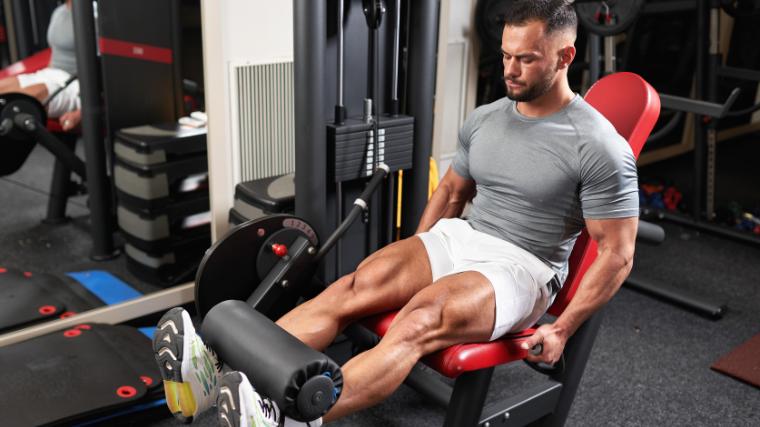
Big quads aren’t just for aesthetics. Building strong quads can help you run faster, jump higher, squat heavier, and learn how to build a mind-muscle connection as a beginner. Let’s get into the specifics of the leg extension — how and why to do it, what to avoid, and other versions to try — so you can build eye-catching muscles with a purpose.
- How to Do the Leg Extension
- Leg Extension Sets and Reps
- Common Leg Extension Mistakes
- Leg Extension Variations
- Leg Extension Alternatives
- Muscles Worked by the Leg Extension
- Benefits of the Leg Extension
- Who Should Do the Leg Extension
- Frequently Asked Questions
Editor’s Note: The content on BarBend is meant to be informative in nature, but it should not be taken as medical advice. When starting a new training regimen and/or diet, it is always a good idea to consult with a trusted medical professional. We are not a medical resource. The opinions and articles on this site are not intended for use as diagnosis, prevention, and/or treatment of health problems. They are not substitutes for consulting a qualified medical professional.
How to Do the Leg Extension
Hop on the leg extension machine and get ready to grow your quads. Although the leg extension only works your quads it’s still important to engage your core, maintain proper posture, and create tension through the rest of your body.
Here’s a step-by-step breakdown of how to control your body and engage your muscles while supported by the machine for the leg extension.
Step 1 — Sit Tall to Set Up
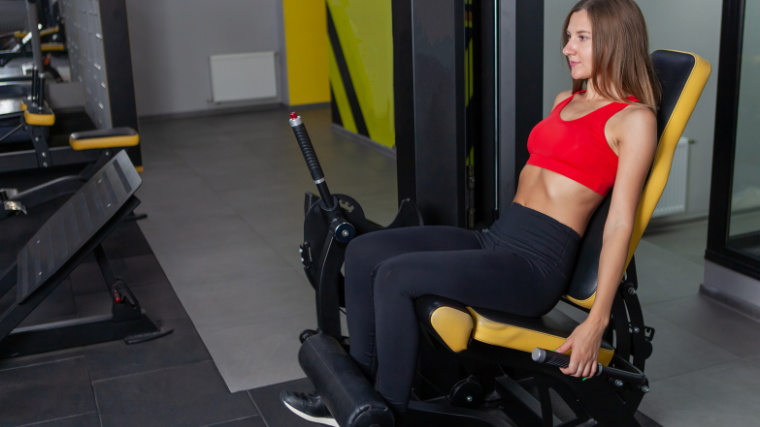
Adjust the height of your seat so your legs are bent at 90 degrees with your lower shins behind the pad. Sit back in the chair and hold on to the handles by your sides. Retract your head. Pull your shoulder blades back and down. Draw your navel towards your spine to engage your abs. Try not to arch your back to maintain a neutral spine.
Coach’s Tip: Keep your back against the pad and hold the position before starting the movement.
Step 2 — Extend Your Legs

Inhale and brace your core. Exhale to extend your lower legs until they are parallel with the ground.
Coach’s Tip: Try to initiate the movement from your quads to avoid extra stress on your knees.
Step 3 — Lower With Control

Lower your legs back to starting position slowly with control. Resist the weight and gravity trying to pull you down faster. Keep your spine straight and core engaged.
Coach’s Tip: Avoid pressing the backs of your knees into the pad while you lower the weight down during the leg extension.
Leg Extension Sets and Reps
It’s important to choose your sets and reps differently based on your goals so your muscles respond appropriately. For strength, think of heavier weight for fewer reps. Endurance training will have you lifting lighter for either more reps or time. Hypertrophy will be somewhere in between the two. Here are a few ways to program the leg extension to fit your goals:
- For Muscle Mass: Perform three to four sets of eight to 12 reps. Leave one to two reps in the tank at the end of each set.
- For Strength: Do four to five sets of four to six reps at a heavy weight.
- For Endurance: Do three sets of 15-18 reps at a light weight with minimal rest time.
Common Leg Extension Mistakes
The leg extension allows you to target your quads without stressing the rest of your body, so you may be able to recover quicker and accumulate more volume. To get the most out of it, try to avoid these common mistakes.
Arching Your Back
The seated position of the leg extension can help protect your back, but you also need to engage your abs and control your spine. It’s common to arch your back during the leg extension as you focus your attention and effort on the movement.
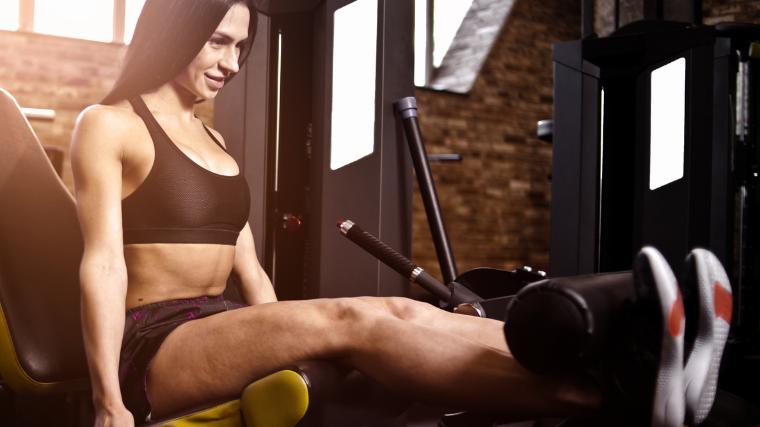
[Read More: The Best Upper Back Exercises For Strength, Size, and Posture]
Be aware of the position of your lower back. If you find yourself compensating for a heavier weight by hyperextending your lumbar spine try going a bit lighter until you can lift without arching your back.
Locking Your Knees Excessively
The leg extension can be a helpful tool for strengthening your knee joints but be careful not to add extra stress by locking or hyperextending them at the top of the lift. Be sure to lift with a full range of motion and contract your quads hard at the top of each repetition, but don’t consciously focus on snapping your knee joint into extension.
Not Controlling the Descent
If you’re going heavy or are reaching fatigue during the leg extension there may be a tendency to drop your legs quickly after you reach the top. Instead, try to control your descent as your legs slowly lower back down towards the floor.
Focusing on the eccentric part of this exercise — or the lengthening of your quads — is integral for muscle hypertrophy. It can also increase your bodily awareness and your ability to move heavier loads.
Leg Extension Variations
You can get many of the quad-building benefits of the leg extension in a few variations. You can try it with your body weight with progressions, go unilateral on the machine, or opt for another machine entirely.
Bodyweight Leg Extension
You can do the leg extension without the machine while seated in a chair. This is a great option for older folks or anyone who isn’t ready for extra resistance. You can progress by adding ankle weights.
https://www.youtube.com/watch?v=OFgG6OjiT4Q
[Read More: The Best Foam Roller Exercises for Mobility and Better Movement]
You can also further progress by standing up if you don’t need a chair. Stand on your left leg and draw your right knee up until your right leg is bent at 90 degrees. Perform bodyweight leg extensions with your right leg in the air and then repeat on the other side.
Single-Leg Leg Extension
Stick with the leg extension machine for this one, but make it unilateral. If you have any imbalances in your muscle size or strength, unilateral training can help to even them out. Perform leg extensions with one leg at a time to feel the difference.
Working one leg at a time on the leg extension allows you to devote maximum effort toward each rep, rather than letting your stronger side pick up the slack of the weaker leg.
Leg Extension Alternatives
If the leg extension machine isn’t for you but you still want to target your quads, try some of these alternative lower-body compound movements. They can all be done as bodyweight exercises or loaded with weights.
You can also tweak each of these by changing the foot position or angle of your body in order to target your quads even more. Your quads won’t be isolated but they’ll be working together and these important movement patterns can make you stronger in everyday life.
Squat
Learning to do a bodyweight squat is a great alternative to the leg extension for beginners and older folks. Your quads will work to extend your legs but you’ll also be using the rest of your body and learning to control your weight. When you’re ready to progress, load it up for goblet squats with dumbbells or kettlebells, or move on to barbell back squats or front squats.
[Read More: The Split Squat Can Improve Mobility and Leg Strength]
In any type of squat, focusing on your quads throughout the entire lift (or elevating your heels via weightlifting shoes) will help get your quads into the game. You can also think about pressing your big toe mound into the floor as you stand up; ensure, though, that your entire foot stays firmly in contact with the floor and you aren’t drifting onto your heels or fluttering up onto your toes.
Step-Up
The step-up mimics the pattern of walking up a flight of stairs. This makes it a great exercise and alternative to the leg extension for older folks. It is also relevant for advanced lifters since you can gradually raise the height of the step to induce progressive overload.
To target your quads in the step-up, focus on increasing the height of your step before adding weight. As you step, push into your big toe mound to straighten your leg. You will be going through the motion of the leg extension by bending your knee as you step and extending it as you straighten.
Bulgarian Split Squat
The Bulgarian split squat is an advanced unilateral exercise; consider it a progression from a lunge. It’s a challenging alternative to the leg extension that will burn your quads to a crisp. You can progress the Bulgarian by adding weight or changing the elevation of your back leg.
You can also shift some of the mechanics if you want to target your glutes or your quads: Leaning slightly forward and allowing your front knee to travel past your ankle should apply a bit more tension to your quads instead of your glutes.
Leg Press
If you enjoy using exercise machines on leg day but are open to other options, consider the leg press. The leg press may not isolate your quads, but you can make up for this by using much more overall weight.
If you aren’t able to do lower-body compound movements outside of machines, the leg press is a good option to get you working your lower body muscles and joints together at the same time in something similar to a squat pattern.
Muscles Worked by the Leg Extension
Although it’s important to stabilize your full body when doing this exercise, the leg extension technically only works your quadriceps femoris muscles. Your quads’ primary function is to straighten your knee joint, but they also play into how you walk, run, kick, and jump. They can affect your posture and help stabilize your patella. (1)
Quadriceps
Your quads consist of your rectus femoris, vastus lateralis, vastus medialis, and vastus intermedius (hence “quad”). Interestingly, modern anatomical research has revealed that there may be a fifth compartment to the tissue, called the tensor of the vastus intermedius (TVI). (1)
All sections of your quadriceps work to straighten your knee joint. Notably, your rectus femoris is biarticular; it crosses both your knee and hip joints. This means that sitting back in the seat of the leg extension with an open hip angle may place more stretch on that portion of your quads.
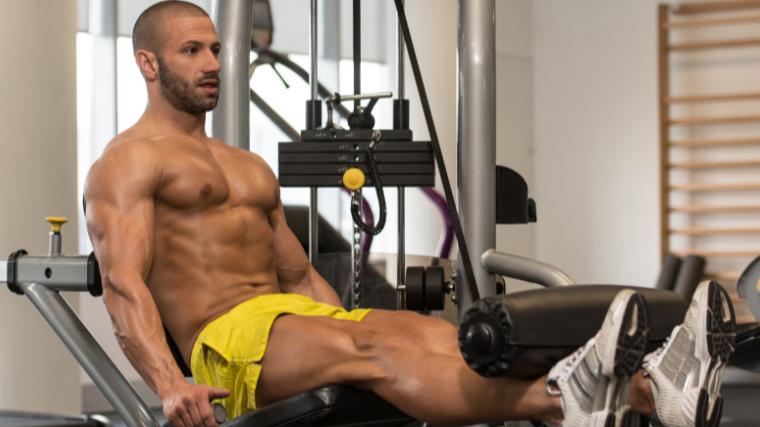
[Read More: Active Stretches for Optimal Recovery & Performance]
Each section of your quadriceps contributes to different stability-related functions around your femur, but for practical purposes, you can think of your quads as one synchronous unit during the leg extension — for the most part.
Targeting Your Quads
Some interesting data has shown that you can bias certain portions of your quads during the leg extension by pointing your toes either inward or outward. An inward-pointing toe (which also creates internal rotation at the hip) may lead to more vastus lateralis activation, and vice versa. (2)
Do note that tweaking your technique like this won’t drastically alter the effects of the leg extension. It may not be worth your time unless you’re an intermediate or advanced bodybuilder.
Benefits of the Leg Extension
The leg extension is a quad-strengthening exercise with support from a seated position on the machine. Isolating your quads may have hypertrophy, strength, and joint health benefits.
Isolates Your Quads
The leg extension purely works your quads. It’s a single-joint action of knee extension, which is the primary function of your quads. Isolation is great for bodybuilders that are looking for maximum muscle growth for aesthetics. The leg extension doesn’t tax your nervous system and body like heavy squats do, thus making it easier to recover from.
Isolating your quads can also have strength-building benefits. If you are looking to build big-time leg strength it’s wise to include a variety of leg-training movements rather than hammering away at one exercise indefinitely.
Strengthens Your Knees
Since your quads function to extend your knee and stabilize your patella, it follows that strengthening your quads can lead to stronger knees. If you’re new to exercise and haven’t learned to engage your muscles properly, especially with free weights, the leg extension serves as a great first step.
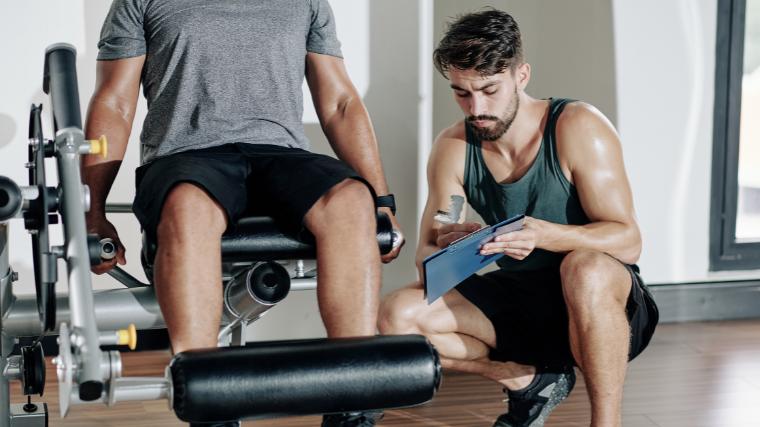
A leg extension is a good place to purely strengthen your quads with the intention of improving your knees’ tensile capacity, since you don’t have the added stress of supporting your body weight during a free weight movement like the squat or lunge.
Machines Are Accessible
Exercise machines catch some flak for not being “functional.” If you’re someone who sits a lot at work it also may not be an optimal use of your limited gym time to continue sitting while exercising. But machines can actually be a great and safe option for beginners or older folks who may not be comfortable with free weights or performing exercises on their own.
When you use a machine like the leg extension, you still need to create tension and maintain a good posture, but your stabilizing muscles don’t need to work as hard as they would in a squat or lunge.
Lets You Train Unilaterally
The leg extension is meant to be done with both legs at the same time, but you can also do a single-leg leg extension as a variation. Bodybuilders, for instance, can benefit from this if they are trying to even out aesthetic imbalances in their quads, but the benefits don’t end there.

If you’re working on an advanced unilateral exercise like a pistol squat, you may notice that one leg is weaker than the other. Adding in single-leg leg extensions can help even out your quad strength. Or, if you play a sport that involves kicking like soccer, unilateral leg extensions can also help keep both of your legs in fighting shape.
Who Should Do the Leg Extension
The leg extension is a straightforward exercise that can help build muscle and strength in your quads. If you have limited time in the gym and are able to do more compound movements, it may not be worth your time. For beginners, bodybuilders, and people recovering from injuries, though, it can be a great supplement.
Beginners
If you’re brand new to the gym, learning to engage your muscles is just as important as growing or strengthening them. Isolation machines give you a chance to hone in on the actual feeling of your quads working to extend your knees. You’ll be able to take this with you as you move into more complex exercises.
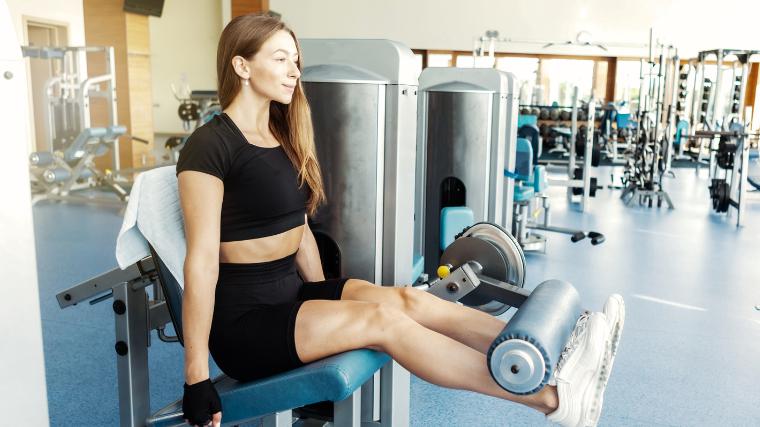
[Related: The Gymgoer’s Guide to Whey Protein]
For older folks who may also be beginners, isolation machines like the leg extension serve as accessible introductions to resistance training. The bodyweight variation done in a chair can also be a great option; you can work your quads without having to support the rest of your body weight.
Bodybuilders
Bodybuilders can benefit from the leg extension. They’ll be able to do more volume at middle-range weights to stimulate growth and hypertrophy in their quads. Bodybuilders will often do several accessory movements during a leg workout. Cap off your next leg day with the leg extension to take your quads to the brink without worrying about full-body stability.
If You’ve Been Away From the Gym
Your quads play an important role in extending your knees and stabilizing your patella. The leg extension can serve as a way of rebuilding strength and muscle after a period of inactivity. Be sure to consult with your doctor or physician before starting any type of exercise regimen.
Build Those Quads
Functional fitness enthusiasts may tell you not to waste your time on isolation machines like the leg extension. However, the leg extension can be beneficial if your goals involve building strength and muscle in your quads. You can incorporate leg extensions into a program as an addition to more robust exercises that will keep you strong and prepared for the physical challenges of everyday life.
[Read More: The Best Quad Exercises and Quad Workouts for Muscle Gain]
If you can’t or don’t want to do the leg extension, the good news is you will absolutely work your quads through other exercises like squats and lunges. But, in a pinch, if you want the support of the machine to pump out some quads gains, hop on and give it a try.
FAQs
Still have some questions on the leg extension? Let’s get some answers.
Is the leg extension bad for my knees?
If done correctly and at an appropriate weight, the leg extension is in no way inherently harmful. Applying mechanical tension to any joint will create torque, and it is the responsibility of your soft tissues (as in, your muscles and tendons) to withstand that stress. As long as you practice good form and don’t push your limits too quickly, you should be good to go.
Can I do leg extensions instead of squats?
If you’re physically able to do squats, you should probably do squats. The leg extension only works your quads, and if you’re looking to build strength or muscle in your legs, squats will work all the muscles in your legs and teach you to use them without added support at the same time.
I have a back injury, is the leg extension safe?
If you have an injury, always consult with your physician before starting a new exercise program. The leg extension may be safe for someone with a back injury because you don’t need to stand upright or load your spine. That said, you should still engage your core and protect your spine in the leg extension.
References
- Bordoni B, Varacallo M. Anatomy, Bony Pelvis and Lower Limb: Thigh Quadriceps Muscle. [Updated 2022 May 10]. In: StatPearls [Internet]. Treasure Island (FL): StatPearls Publishing; 2023 Jan-.
- Stoutenberg, M., Pluchino, A. P., Ma, F., Hoctor, J. E., & Signorile, J. F. (2005). The impact of foot position on electromyographical activity of the superficial quadriceps muscles during leg extension. Journal of strength and conditioning research, 19(4), 931–938.
Featured Image: Jasminko Ibrakovic / Shutterstock